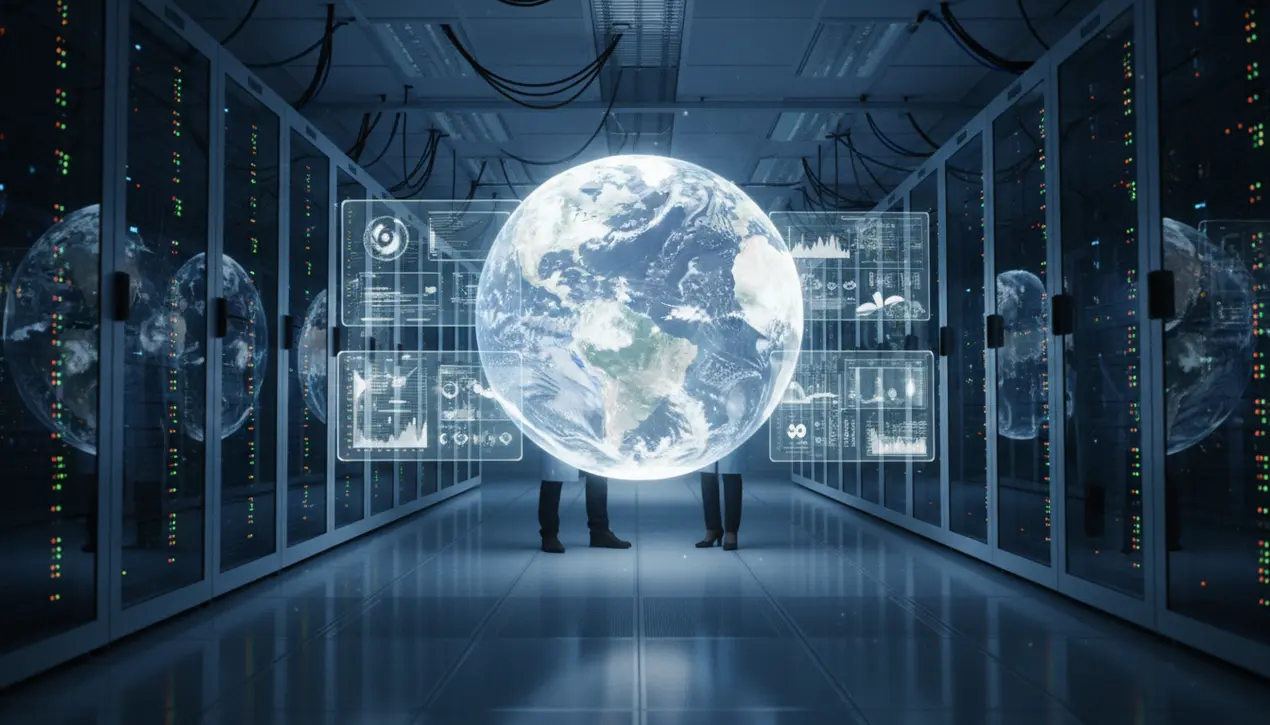
Scienceearth scienceEnvironmental Hazards
Scientists Build Digital Earth to Predict Disasters
TH
Thomas Green
2 hours ago7 min read
In a staggering leap for computational science, researchers have successfully engineered a digital twin of our entire planet, a simulation so granular it operates at a one-kilometer resolution, allowing it to trace the nascent formation of a single thunderstorm or chart the precise journey of a solitary cloud across a mountain range. This isn't merely a high-resolution weather model; it’s a holistic, dynamic replica of Earth's complex systems—atmosphere, oceans, cryosphere, and biosphere—all interacting in real-time within a virtual space.The implications are as vast as the simulation itself, echoing the kind of ambitious, system-level thinking championed by visionaries like Elon Musk in his quest to make humanity a multi-planetary species. This digital Earth represents our most powerful tool yet for planetary stewardship, a crystal ball capable of running 'what-if' scenarios on a global scale.Imagine probing the long-term climatic consequences of a new geoengineering proposal, or predicting with unprecedented accuracy the path and intensity of a hurricane days before it even fully organizes over the ocean. For coastal cities, this could translate into evacuation orders issued with a confidence never before possible, saving countless lives and billions in property damage.The technological marvel behind this lies at the convergence of exascale computing and advanced algorithms, a symphony of silicon and code that processes petabytes of real-time data from a global fleet of satellites, ocean buoys, and atmospheric sensors. It’s a project that makes previous climate models look like rudimentary sketches compared to a photorealistic rendering.However, this power comes with profound ethical and geopolitical questions. Who controls this predictive engine? How is the data, which predicts famine in one region and bumper crops in another, shared equitably among nations? The potential for a 'predictive divide' is real, where wealthy nations harness these insights for their security and economic advantage, leaving developing countries vulnerable.Furthermore, the model's very precision forces us to confront the uncomfortable truths of our impact on the planet with a clarity that is impossible to ignore; it’s no longer about abstract future risks, but quantifiable, visualized outcomes of our current actions. This digital Earth is more than a scientific achievement; it is a mirror held up to humanity, reflecting both our ingenuity and the monumental responsibility that comes with it, challenging us to use this knowledge not just for prediction, but for meaningful, global action.
#digital twin
#earth simulation
#disaster prediction
#climate modeling
#supercomputing
#featured
Stay Informed. Act Smarter.
Get weekly highlights, major headlines, and expert insights — then put your knowledge to work in our live prediction markets.
Comments
Loading comments...
© 2025 Outpoll Service LTD. All rights reserved.